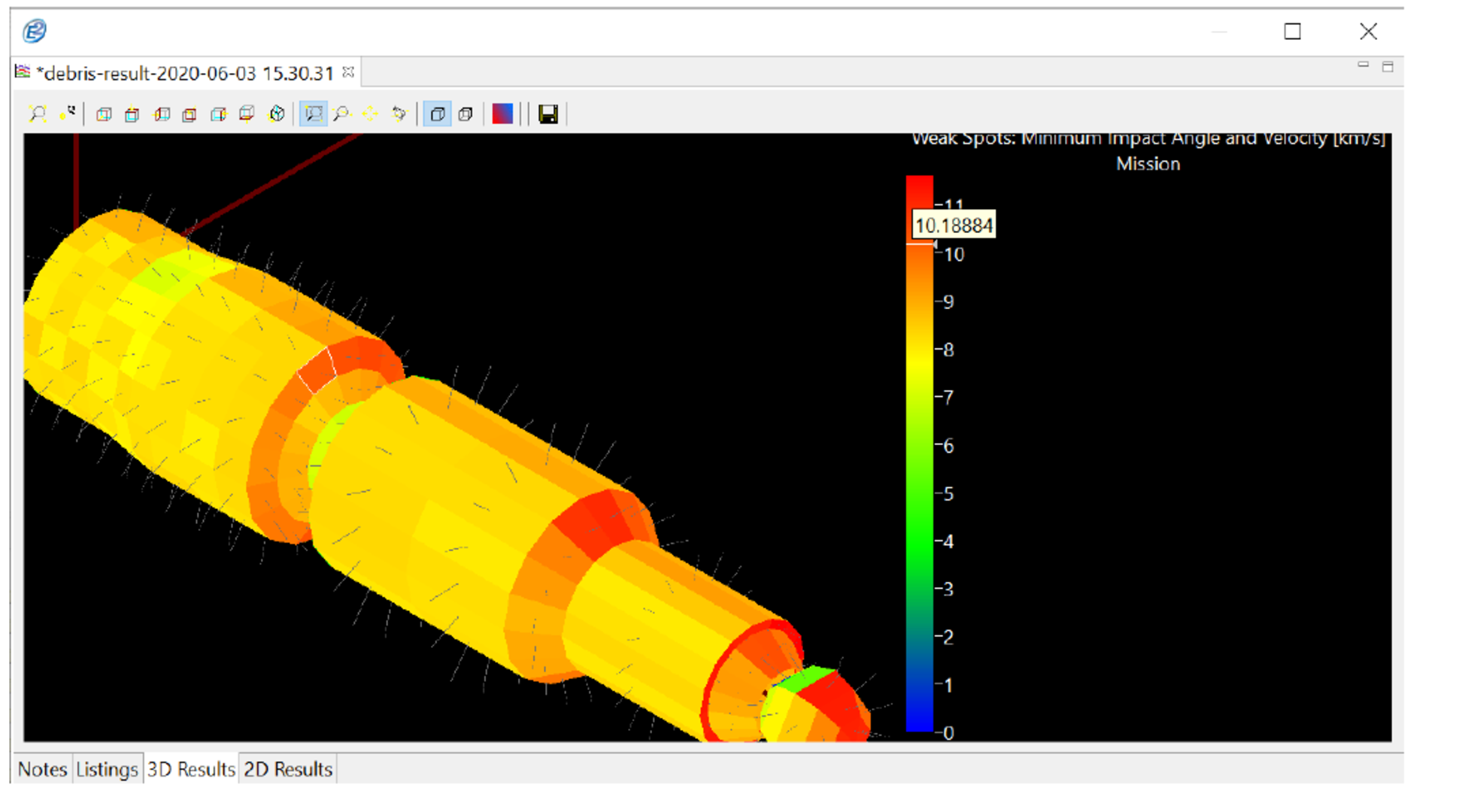Modelling debris risk for interplanetary missions
A TDE activity with etamax space, in Germany, has successfully updated the tool ESA uses to perform debris and micrometeroid risk assessments to missions.
Spacecraft are frequently exposed to meteoroids and space debris. The ensure mission success, the risk these debris pose must be mitigated and the potential impact must be understood.
Meteoroids can be a driver of missions designs, planning them so that areas of greater risk can be avoided can help improve the chance a mission will succeed.
The tool ESA currently uses, ESABASE2/ Debris performs 3D risk assessments of impacts from space debris and micrometeoroids in near-Earth environments. It interfaces with various models on debris and micrometeoroid environments, covering Earth and Moon orbiting spacecraft and Sun-Earth Lagrangian points L1 and L2.
The recently closed activity, which was presented at the Technology Sharing Days on 3 March 2021, has extended the applicability of the tool to also cover environments beyond near-Earth, which means it can now be used to study the impact debris and micrometeroids may have on interplanetary missions.
Risk assessments for interplanetary missions have to take into account different challenges than those for near-Earth, where the meteoroid environment is reasonably well known and studied and orbits are fairly well fixed. For interplanetary missions, it must be possible to calculate the meteoroid environment for any possible trajectory, with very little knowledge of the environment once you move further from Earth.
The software interface was extended to be able to read, process and sample interplanetary trajectories from a variety of formats. The model set for micrometeoroids was also expanded to be able to evaluate how they may flux along the trajectory with the models most commonly used.
The now updated version of ESABASE2/Debris is already available, with an enhanced handling of common trajectory file formats, several interplanetary meteoroid models, as well as an improved analysis and processing ability for better results.
The tool can now be used for performing impact risk analyses for space systems using various interplanetary meteoroid environment models. It will continue to be upgraded by adding the latest available interplanetary environment models.
TDE T304-602EP closed at the end of 2020. The final documentation is available on the TEC DMS and the Final Presentation was made at the Technology Sharing Days and is available on an internal-only link: https://youtu.be/wtjXIIHEXUM
A TDE activity with etamax space, in Germany, has successfully updated the tool ESA uses to perform debris and micrometeroid risk assessments to missions.
Spacecraft are frequently exposed to meteoroids and space debris. The ensure mission success, the risk these debris pose must be mitigated and the potential impact must be understood.
Meteoroids can be a driver of missions designs, planning them so that areas of greater risk can be avoided can help improve the chance a mission will succeed.
The tool ESA currently uses, ESABASE2/ Debris performs 3D risk assessments of impacts from space debris and micrometeoroids in near-Earth environments. It interfaces with various models on debris and micrometeoroid environments, covering Earth and Moon orbiting spacecraft and Sun-Earth Lagrangian points L1 and L2.
The recently closed activity, which was presented at the Technology Sharing Days on 3 March 2021, has extended the applicability of the tool to also cover environments beyond near-Earth, which means it can now be used to study the impact debris and micrometeroids may have on interplanetary missions.
Risk assessments for interplanetary missions have to take into account different challenges than those for near-Earth, where the meteoroid environment is reasonably well known and studied and orbits are fairly well fixed. For interplanetary missions, it must be possible to calculate the meteoroid environment for any possible trajectory, with very little knowledge of the environment once you move further from Earth.
The software interface was extended to be able to read, process and sample interplanetary trajectories from a variety of formats. The model set for micrometeoroids was also expanded to be able to evaluate how they may flux along the trajectory with the models most commonly used.
The now updated version of ESABASE2/Debris is already available, with an enhanced handling of common trajectory file formats, several interplanetary meteoroid models, as well as an improved analysis and processing ability for better results.
The tool can now be used for performing impact risk analyses for space systems using various interplanetary meteoroid environment models. It will continue to be upgraded by adding the latest available interplanetary environment models.
TDE T304-602EP closed at the end of 2020. The final documentation is available on the TEC DMS and the Final Presentation was made at the Technology Sharing Days and is available on an internal-only link: https://youtu.be/wtjXIIHEXUM


